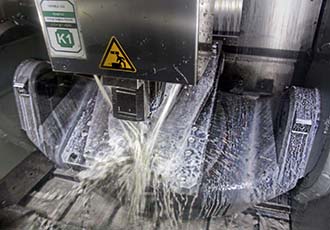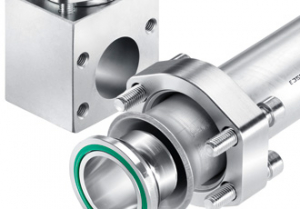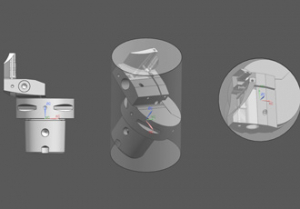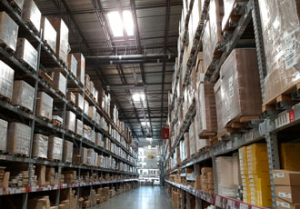Cell for machining airbus engine pylons

An aerospace supplier in the UK has been awarded the contract to produce the pylon box assembly that attaches the engine to each wing of an Airbus A319, A320 and A321 NEO (New Engine Option) single-aisle jetliner.
After extensively researching the market, the subcontractor installed a new, dedicated machining and assembly cell at one of its production facilities. The process is now fully developed for manufacturing the left and right hand pylons at a rate destined to rise to 50 pairs per month by 2019 to meet current aircraft production rates.
The cell includes a German-built Hermle C 42 UP twin pallet, vertical spindle, five axis machining centre for finish milling a titanium rib that forms part of the pylon’s construction. Two three axis vertical machining centres for initially roughing material from the titanium billets and a large pylon assembly area complete the equipment devoted to this project.
The subcontractor develops close, long term business relationships with its customers that often involve life-of-programme agreements. It therefore needed a manufacturing solution for the Airbus pylon that would support the speed and reliability of production that the customer expects, while at the same time keeping an eye on costs so that a competitive tender could be put in.
Choice of the five axis machining centre was key, as it was a significant tranche of the investment. The Hermle option was selected based on suitability for purpose, value for money and an established, successful association with the UK sales and service agent, Geo Kingsbury.
Other factors in favour of the supplier’s equipment were the Heidenhain control, the high torque spindle necessary for machining titanium 24/7 and Hermle’s extensive database of machining knowledge at its production plant in Gosheim, which included information directly relevant to the application.
While all other ribs in an Airbus neo jetliner are made from aluminium, the pilon rib must be machined from titanium to withstand the higher temperatures generated by the new engine, either Pratt & Whitney’s PW1000G or the LEAP-1A from CFM International.
The production route starts with a titanium billet, which is roughed on one of the two three axis VMCs. It is then finish milled on the Hermle C 42UP to tolerances down to ± 0.1mm in a five axis cycle using the machine’s rotary table/swivelling trunnion. Op one is completed on the first pallet and op two on the second, with the assistance of special fixtures made in-house. Overall, around 90% of the volume of the billet is removed.
The ribs are assembled with mainly aluminium parts and fabricated titanium components on modular benches alongside the machining centres. When complete, they are delivered to the Airbus plant in Broughton, where the wings for all the prime’s civil aircraft are assembled.
Richard Kingsbury, Managing Director of Geo Kingsbury, commented: “The aerospace industry has seen enormous changes over the last 10 years, with many new product introductions and frequent design changes. Subcontractors in the supply chain have to be nimble to cope with this challenging, global business environment and compete effectively.
"There is a pressing need to put in place efficient production methods based on lean manufacturing principles and this installation is a prime example.”
Similar articles
More from Geo Kingsbury Machine Tools Limited
- Cell for machining airbus engine pylons 17th July 2018
- Portal mill for prototype tool and mould making 7th February 2018
- Manufacturing solutions reduce cost of production 6th February 2018
- Entering the additive manufacturing sector 2nd February 2018



ed.jpg)








Write a comment
No comments